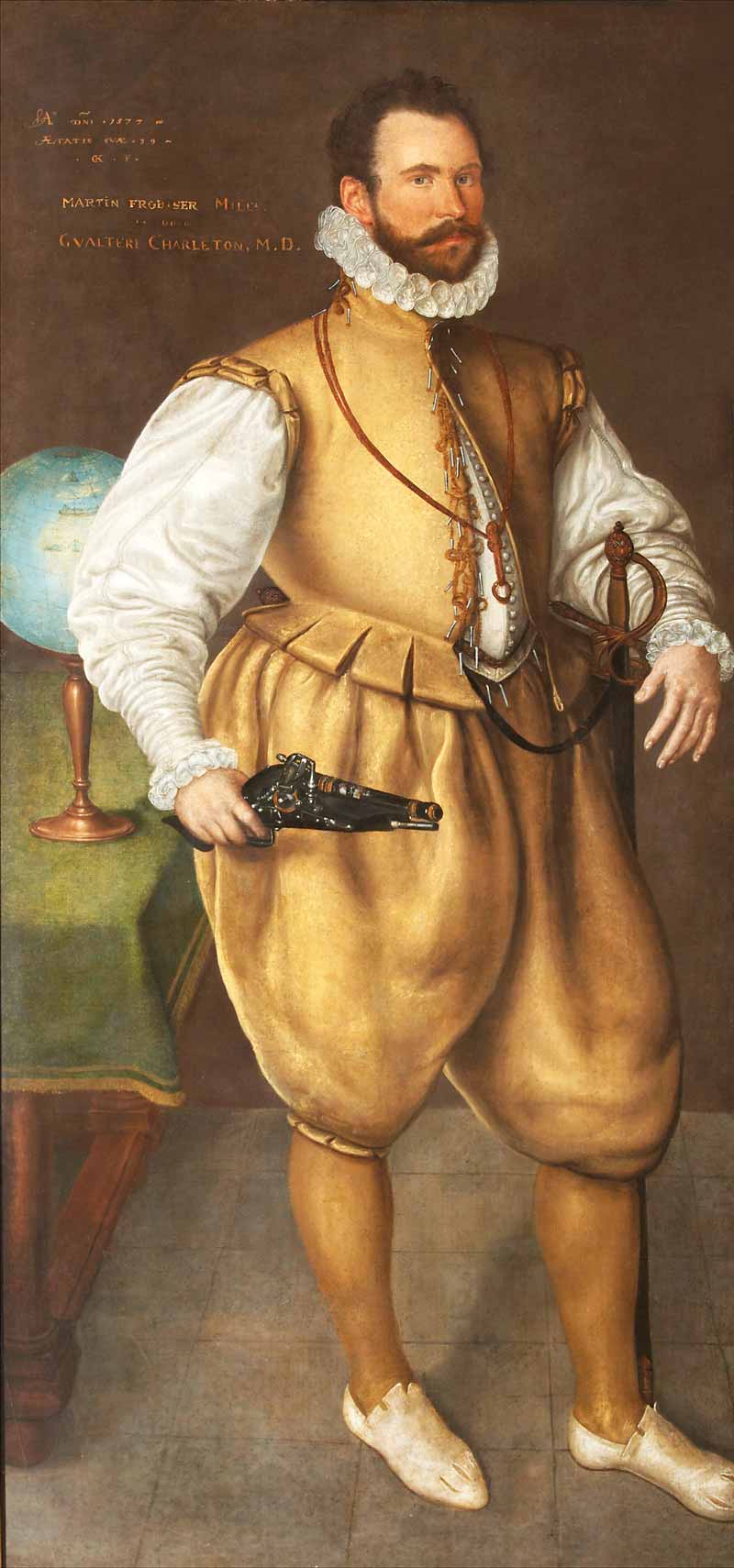In the sixteenth century, Spain was the dominant force of global exploration; they had established colonies in the Caribbean, Mexico and as far north as Florida. The British, meanwhile, were reduced to claiming other nation’s explorers as their own (Italian Giovanni Caboto became John Cabot). London was content with itself and had little interest in the rest of the world.

Artist Cornelis Ketel depicts explorer Martin Frobisher around the time of his 1576 Northwest Passage expedition. [Cornelis Ketel/University of Oxford/Wikimedia]
This changed in 1576 when Queen Elizabeth I commissioned Martin Frobisher to find a route to China. Spain had become the richest nation in Europe, largely from the gold it had plundered in the New World. Elizabeth, one of Britain’s shrewdest rulers, realized her country had to get in on the action.
Frobisher was a muscular, short-tempered adventurer who had been arrested for piracy three times. Of the elusive route to China, he said: “It is still the only thing left undone whereby a notable mind might be made famous and remarkable.”
Frobisher was a gifted salesman and found backing for a third voyage.
In the spring of 1576, Frobisher sailed from London on the Gabriel. When he got to the eastern entrance to the Northwest Passage, he decided that America was on his left, and the continent of Asia was on his right; he had found the route. This belief was confirmed when he saw a group of Inuit paddle up to his ship; he assumed they were Asians.
He sent five crewmen to row ashore with the Inuit. They landed out of sight of the ship. None of them was ever seen again. Frobisher went ashore and searched, but didn’t find any trace of his men.
Frobisher kidnapped an Inuk who approached their rowboat in a kayak and took him back to England as proof that he had found Asia. On the voyage back, the man bit off his own tongue. When they got to England, the Inuk shot swans with a bow and arrow on Queen Elizabeth’s lawn at Hampton. He died a few weeks later.
While his “Asian” prisoner had perished, Frobisher had also returned with mineral samples that contained gold. He went on a second expedition, this time in search of the precious metal. He was shot in the buttock with an Inuit arrow, mined 200 tonnes of ore, and kidnapped a man, woman and child. Like their predecessor, they all died within a month of arriving in England. English assayers were doubtful about the quality of the ore, but Frobisher was a gifted salesman and found backing for a third voyage.
He intended to establish a permanent settlement, but the ship carrying the lumber sank, and the crew of another deserted and sailed back to England. Frobisher returned with 1,100 tonnes of what turned out to be iron pyrite—“fool’s gold.” His reputation in tatters, he went back to the lucrative occupation of pirating, taking gold from the Spanish.
In 1588, his reputation was restored when he was a commander in the epic British victory over the Spanish Armada, and he was knighted for his efforts. In 1594, while William Shakespeare was forming his first theatre company, Frobisher was shot while fighting the Spanish and died of his wounds.
Advertisement





















